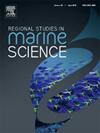马来西亚水生微塑料污染现状及未来展望
IF 2.4
4区 环境科学与生态学
Q3 ECOLOGY
引用次数: 0
摘要
微塑料(MP)在塑料的整个生命周期中都会产生,造成广泛的环境污染。本文综述了马来西亚水生生物MPs研究趋势和知识缺口的综合分析。比较分析显示,在MP的摄入和积累方面存在显著差异,一些鱼类,如鲨鱼和鲭鱼,含有数千个MP,表明广泛的污染。此外,双壳类动物,特别是牡蛎和血贝,由于它们的滤食性,可以作为海洋污染的生物指示物,显示出威胁食品安全的MPs浓度。腹足类动物、海参和甲壳类动物也表现出MP的存在,通常以纤维和聚合物(如聚对苯二甲酸乙二醇酯(PET))为主,其摄入可能受沉积物摄入和饮食的影响。关于浮游动物、多毛类和水生昆虫等较低营养水平的数据仍然有限,但现有证据表明,潜在的生物放大和生态系统破坏可能加剧MP向包括人类在内的高等生物的转移。因此,了解这些差异效应强调了研究生物群-多聚体相互作用的重要性,以更好地评估和减轻环境多聚体污染对健康的影响。此外,机制和长期毒理学研究仍然有限,因此迫切需要进行全面的风险评估。在这方面,加强污染物监测、减少塑料释放和开发更安全的替代材料是减轻水生环境中宏观和微塑料毒性的一些关键措施。本文章由计算机程序翻译,如有差异,请以英文原文为准。
Current status and future outlook of aquatic microplastic pollution in Malaysia
Microplastics (MP) are generated across the full life cycle of plastics, causing widespread environmental pollution. This review provides a comprehensive analysis of MPs research trend, and knowledge gaps in aquatic organisms in Malaysia. Comparative analyses reveal significant variation in MP ingestion and accumulation, with some fish species, such as sharks and mackerel, harbouring thousands of MPs, indicating widespread contamination. Moreover, bivalves, particularly oysters and blood cockles, act as bioindicators of marine pollution due to their filter-feeding habits, displaying MPs concentrations that threaten food safety. Gastropods, sea cucumbers, and crustaceans also exhibit MP presence, often dominated by fibres and polymers like polyethylene terephthalate (PET), with ingestion likely driven by sediment intake and diet. Data on lower trophic levels, such as zooplankton, polychaetes, and aquatic insects, remain limited, yet existing evidence suggests potential biomagnification and ecosystem disruption, which could exacerbate MP transfer to higher organisms, including humans. Thus, understanding these differential effects underscores the importance of investigating biota-MP interactions to better assess and mitigate the health impacts of environmental MPs pollution. Moreover, mechanistic and long-term toxicological studies remain limited, necessitating the urgency for comprehensive risk assessments. In this regard, enhanced pollutant monitoring, reduced plastic release, and development of safer alternative materials are some of the measures critical to mitigate macro- and microplastic toxicity in aquatic environments.
求助全文
通过发布文献求助,成功后即可免费获取论文全文。
去求助
来源期刊

Regional Studies in Marine Science
Agricultural and Biological Sciences-Ecology, Evolution, Behavior and Systematics
CiteScore
3.90
自引率
4.80%
发文量
336
审稿时长
69 days
期刊介绍:
REGIONAL STUDIES IN MARINE SCIENCE will publish scientifically sound papers on regional aspects of maritime and marine resources in estuaries, coastal zones, continental shelf, the seas and oceans.
 求助内容:
求助内容: 应助结果提醒方式:
应助结果提醒方式:


